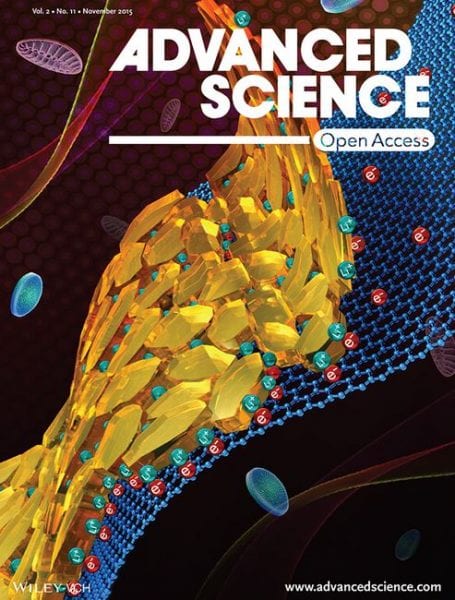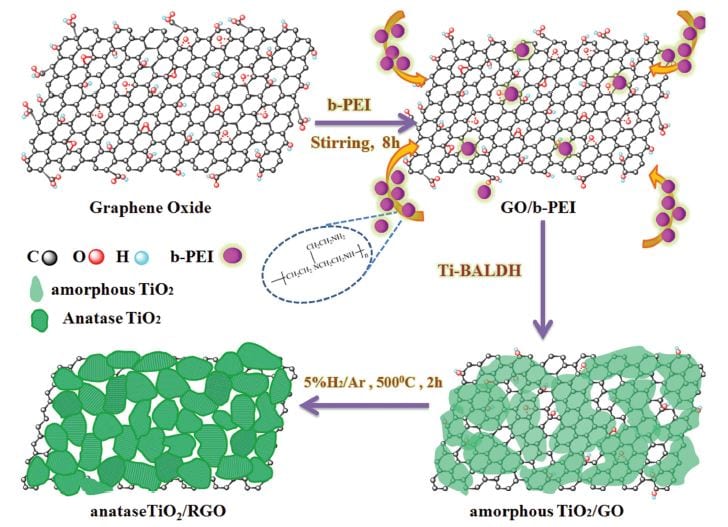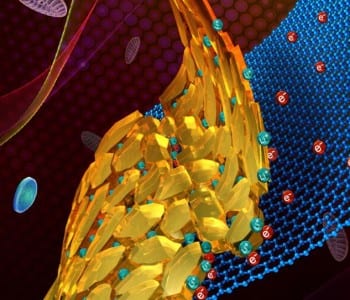 Researchers from Beijing University of Technology developed a biomineralization-inspired synthesis of a net-like TiO2/reduced graphene oxide (RGO) composite. The material shows an excellent rate capability and long cycle life as anode for Li-ion batteries. Crystallization of TiO2 on RGO occurs under ambient conditions without a thermal process. Therefore, this biomineralization strategy is an environmental friendly alternative to crystallization via thermal annealing or solvothermal processes. The structure of the material is graphically represented on the inside front cover of Advanced Science Volume 2, Issue 11.
Researchers from Beijing University of Technology developed a biomineralization-inspired synthesis of a net-like TiO2/reduced graphene oxide (RGO) composite. The material shows an excellent rate capability and long cycle life as anode for Li-ion batteries. Crystallization of TiO2 on RGO occurs under ambient conditions without a thermal process. Therefore, this biomineralization strategy is an environmental friendly alternative to crystallization via thermal annealing or solvothermal processes. The structure of the material is graphically represented on the inside front cover of Advanced Science Volume 2, Issue 11.
The biomineralization-inspired synthesis of TiO2 mimics the naturally occurring biosilification process. It has recently been utilized to synthesize highly controlled TiO2 nanostructures in an environmentally friendly manner. With this method, a net-like crystal structure of nanoparticles smaller than 10 nm is achieved.
In the synthesis strategy, reported by Qiang Zhang, Yong Yan, and Ge Chen, graphene oxide (GO) is covered with a positively  charged, branched polyethylenimine. This polymer controls the crystallization of TiO2 as a catalyst and links the crystals to the GO template. Thus, crystallization is limited to the surface of the template. After the reduction of GO, the TiO2 crystals form net-like interconnected anatase nanoparticles. The pores in the net are proposed to be responsible for the enhanced performance in Li-ion batteries, as they could be able to reversibly store lithium ions.
charged, branched polyethylenimine. This polymer controls the crystallization of TiO2 as a catalyst and links the crystals to the GO template. Thus, crystallization is limited to the surface of the template. After the reduction of GO, the TiO2 crystals form net-like interconnected anatase nanoparticles. The pores in the net are proposed to be responsible for the enhanced performance in Li-ion batteries, as they could be able to reversibly store lithium ions.
Advanced Science is a new journal from the team behind Advanced Materials, Advanced Functional Materials, and Small. The journal is fully Open Access and is free to read now at www.advancedscience.com.

















